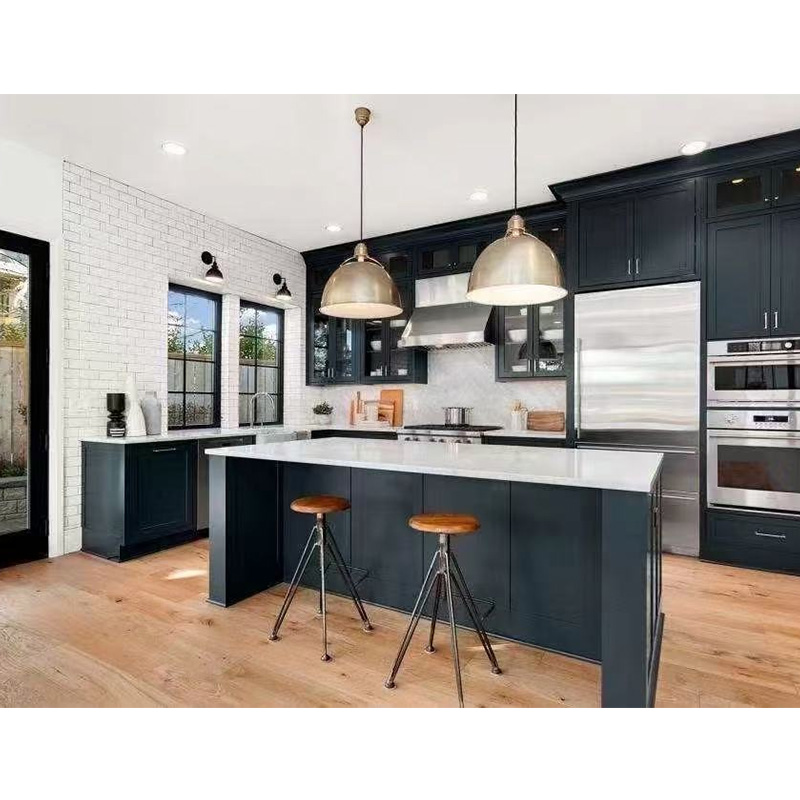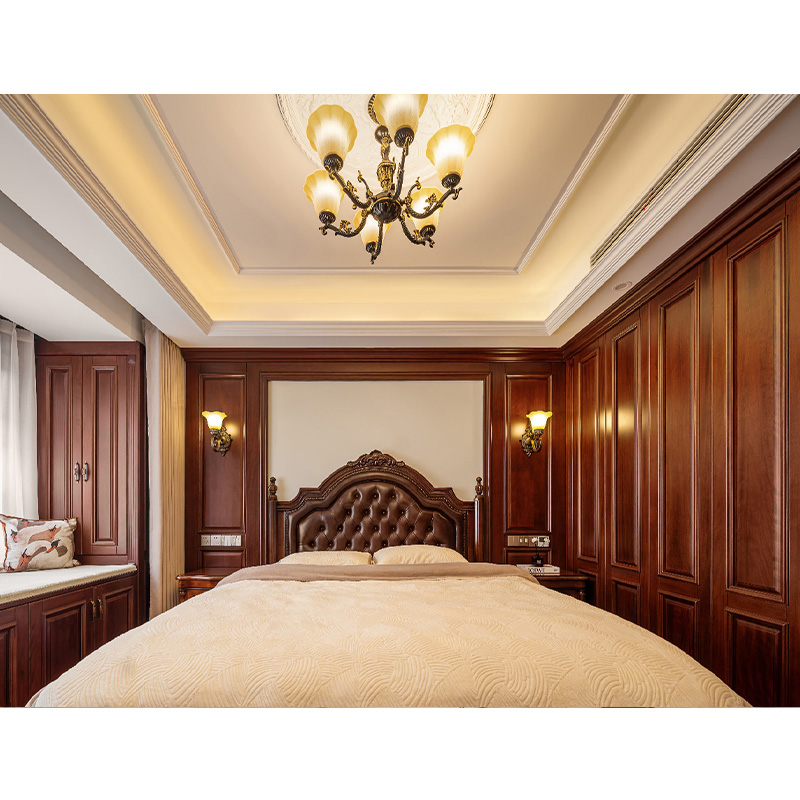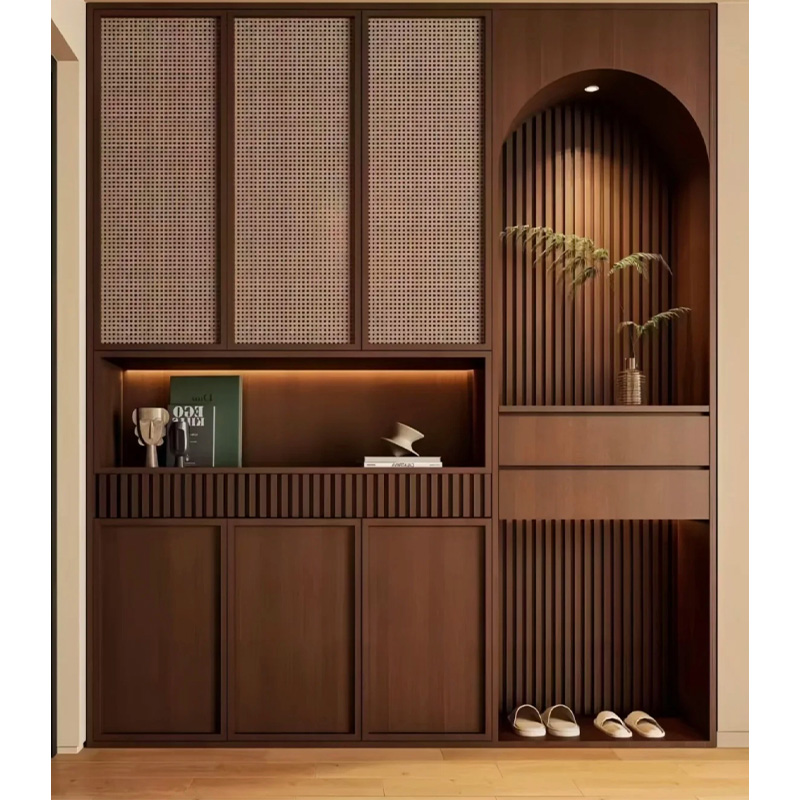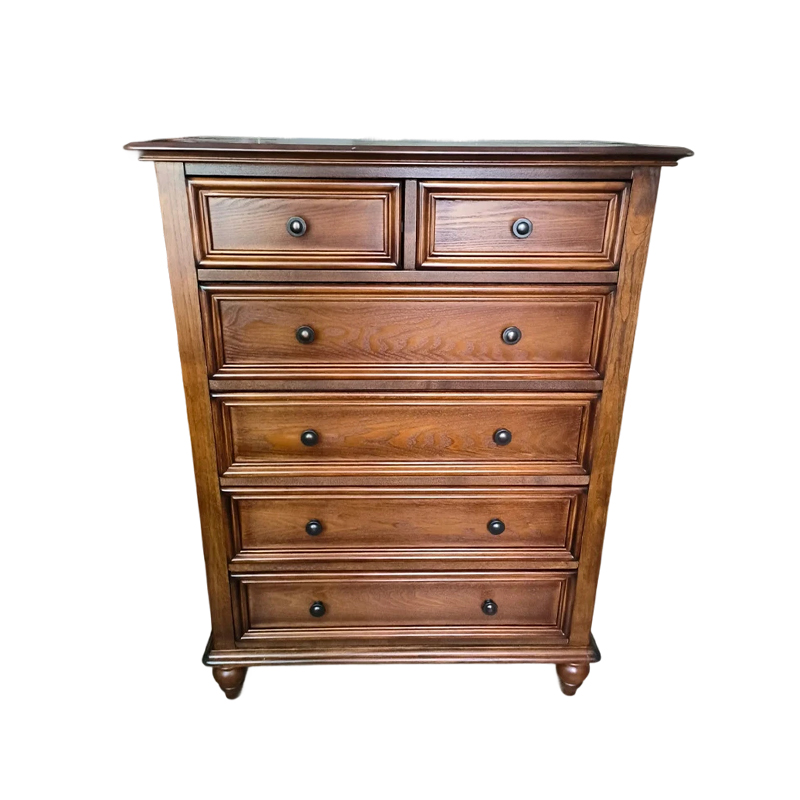How can wardrobes balance aesthetics and dust protection in bedroom design?
Release Time : 2025-09-03
As one of the largest and most frequently used pieces of furniture in a bedroom, wardrobes are not only the core storage space for clothing but also a crucial component of the overall aesthetic of the space. In modern home design, people are no longer satisfied with the wardrobe's sole functionality; instead, they seek harmony with the bedroom's style and the ability to store clothing long-term without the intrusion of dust. However, while open designs offer visual transparency and a beautiful aesthetic, they are prone to dust accumulation. While closed wardrobes offer excellent dust protection, they can also appear dull and oppressive. Striking a balance between aesthetics and dust protection is a key issue in bedroom design. Through appropriate layout planning, material selection, and detailed design, modern wardrobes can achieve a perfect fusion of functionality and aesthetics.
1. Closed Design: The Foundation for Dust Protection While Maintaining Visual Lightness
The most effective way to prevent dust is with closed doors, completely enclosing clothing within the cabinet, shielding it from airborne dust, moisture, and direct sunlight. However, traditional, heavy doors can easily create a depressing impression. To enhance aesthetics, modern designs tend to employ clean lines, low-saturation colors (such as light gray, off-white, and natural wood), and minimalist handles (or no handles at all), allowing the wardrobe to blend into the wall and create a unified visual effect. Furthermore, the use of lightweight materials (such as high-density fiberboard veneer and PET high-gloss board) and narrow frame designs can reduce the visual weight of the cabinet. For example, a full-length door design not only evokes a smooth and elegant appearance but also reduces dust accumulation at the joints, enhancing the overall look. Furthermore, filling or installing a cover between the cabinet and the ceiling prevents dust accumulation and enhances the cleanliness of the space.
2. Glass Doors: The Art of Balancing Transparency and Protection
Glass is an ideal material for resolving the conflict between aesthetics and dust resistance. Tempered glass doors clearly display clothing or accessories within, enhancing the sense of airiness, while effectively blocking dust ingress. To avoid the clutter of fully transparent glass, semi-transparent materials such as chromatic azure glass, frosted glass, or tinted glass can be used. These retain a hazy aesthetic while enhancing privacy and a sense of luxury. Glass cabinet doors are recommended for display areas or frequently worn clothing areas. Paired with built-in LED light strips, they create a "display cabinet" look when opened, enhancing the bedroom's style. Glass is also smooth and easy to clean; regularly wiping with a soft cloth keeps it spotless, offering both practicality and aesthetics.
3. Partially Open Design: Aesthetic Enhancement and Controlled Range
Although completely enclosed cabinets are dust-resistant, they lack depth. A design strategy of "enclosed primarily, open as a supplement" can be employed, with open compartments or display shelves incorporated into the wardrobe. For example, a small number of open shelves in the middle or top section can be reserved for displaying aromatherapy, plants, decorative boxes, or seasonal bags, adding a touch of life and personalization. To reduce dust accumulation, keep open areas to a limited extent (recommended: no more than 20% of the total cabinet volume), and avoid storing dust-sensitive fabrics. Alternatively, removable glass doors or fabric curtains can be added to provide both flexibility and protection when not in use.
4. Materials and Hardware: Details Determine Quality
A wardrobe's dust-resistance is also reflected in the detailed treatment of its materials and hardware. Cabinet panels should be E0 or ENF grade environmentally friendly panels, which offer a dense surface, stain resistance, and wear resistance, reducing dust adhesion. Edge sealing should be meticulous to prevent moisture absorption and swelling, or dust infiltration. Hardware such as slides and hinges should be high-quality with cushioned closing features to ensure doors and drawers close tightly, leaving no gaps. Sliding door tracks should be equipped with dust-proof brushes to prevent dust accumulation and hindering sliding. These details not only extend the wardrobe's lifespan but also enhance the user experience and overall quality.
5. Intelligent and Assistive Design: Enhancing Cleanliness
Modern smart wardrobes can be integrated with UV sterilizers, dehumidification modules, or air purification systems, which automatically activate upon closing the door, further ensuring clean clothing. Furthermore, a dust cover can be installed inside the wardrobe to store seasonal bedding, and drawers can be divided into compartments to prevent clothing from being exposed, reducing dust from within.
The role of the wardrobe in the bedroom has long transcended simple storage, becoming a crucial element influencing the spatial ambiance and quality of life. Through a strategically designed ratio of closed and open areas, transparent glass, minimalist design, and high-quality materials and hardware, a wardrobe effectively protects against dust while projecting an elegant, modern, and personalized aesthetic.
1. Closed Design: The Foundation for Dust Protection While Maintaining Visual Lightness
The most effective way to prevent dust is with closed doors, completely enclosing clothing within the cabinet, shielding it from airborne dust, moisture, and direct sunlight. However, traditional, heavy doors can easily create a depressing impression. To enhance aesthetics, modern designs tend to employ clean lines, low-saturation colors (such as light gray, off-white, and natural wood), and minimalist handles (or no handles at all), allowing the wardrobe to blend into the wall and create a unified visual effect. Furthermore, the use of lightweight materials (such as high-density fiberboard veneer and PET high-gloss board) and narrow frame designs can reduce the visual weight of the cabinet. For example, a full-length door design not only evokes a smooth and elegant appearance but also reduces dust accumulation at the joints, enhancing the overall look. Furthermore, filling or installing a cover between the cabinet and the ceiling prevents dust accumulation and enhances the cleanliness of the space.
2. Glass Doors: The Art of Balancing Transparency and Protection
Glass is an ideal material for resolving the conflict between aesthetics and dust resistance. Tempered glass doors clearly display clothing or accessories within, enhancing the sense of airiness, while effectively blocking dust ingress. To avoid the clutter of fully transparent glass, semi-transparent materials such as chromatic azure glass, frosted glass, or tinted glass can be used. These retain a hazy aesthetic while enhancing privacy and a sense of luxury. Glass cabinet doors are recommended for display areas or frequently worn clothing areas. Paired with built-in LED light strips, they create a "display cabinet" look when opened, enhancing the bedroom's style. Glass is also smooth and easy to clean; regularly wiping with a soft cloth keeps it spotless, offering both practicality and aesthetics.
3. Partially Open Design: Aesthetic Enhancement and Controlled Range
Although completely enclosed cabinets are dust-resistant, they lack depth. A design strategy of "enclosed primarily, open as a supplement" can be employed, with open compartments or display shelves incorporated into the wardrobe. For example, a small number of open shelves in the middle or top section can be reserved for displaying aromatherapy, plants, decorative boxes, or seasonal bags, adding a touch of life and personalization. To reduce dust accumulation, keep open areas to a limited extent (recommended: no more than 20% of the total cabinet volume), and avoid storing dust-sensitive fabrics. Alternatively, removable glass doors or fabric curtains can be added to provide both flexibility and protection when not in use.
4. Materials and Hardware: Details Determine Quality
A wardrobe's dust-resistance is also reflected in the detailed treatment of its materials and hardware. Cabinet panels should be E0 or ENF grade environmentally friendly panels, which offer a dense surface, stain resistance, and wear resistance, reducing dust adhesion. Edge sealing should be meticulous to prevent moisture absorption and swelling, or dust infiltration. Hardware such as slides and hinges should be high-quality with cushioned closing features to ensure doors and drawers close tightly, leaving no gaps. Sliding door tracks should be equipped with dust-proof brushes to prevent dust accumulation and hindering sliding. These details not only extend the wardrobe's lifespan but also enhance the user experience and overall quality.
5. Intelligent and Assistive Design: Enhancing Cleanliness
Modern smart wardrobes can be integrated with UV sterilizers, dehumidification modules, or air purification systems, which automatically activate upon closing the door, further ensuring clean clothing. Furthermore, a dust cover can be installed inside the wardrobe to store seasonal bedding, and drawers can be divided into compartments to prevent clothing from being exposed, reducing dust from within.
The role of the wardrobe in the bedroom has long transcended simple storage, becoming a crucial element influencing the spatial ambiance and quality of life. Through a strategically designed ratio of closed and open areas, transparent glass, minimalist design, and high-quality materials and hardware, a wardrobe effectively protects against dust while projecting an elegant, modern, and personalized aesthetic.







